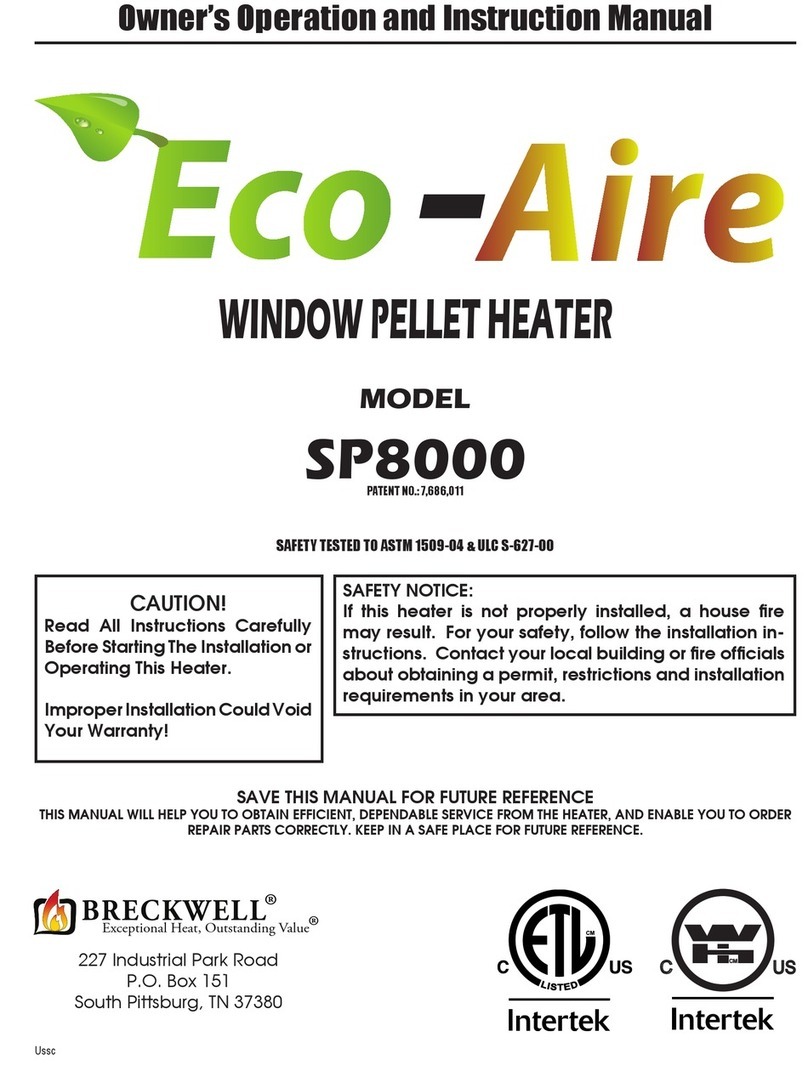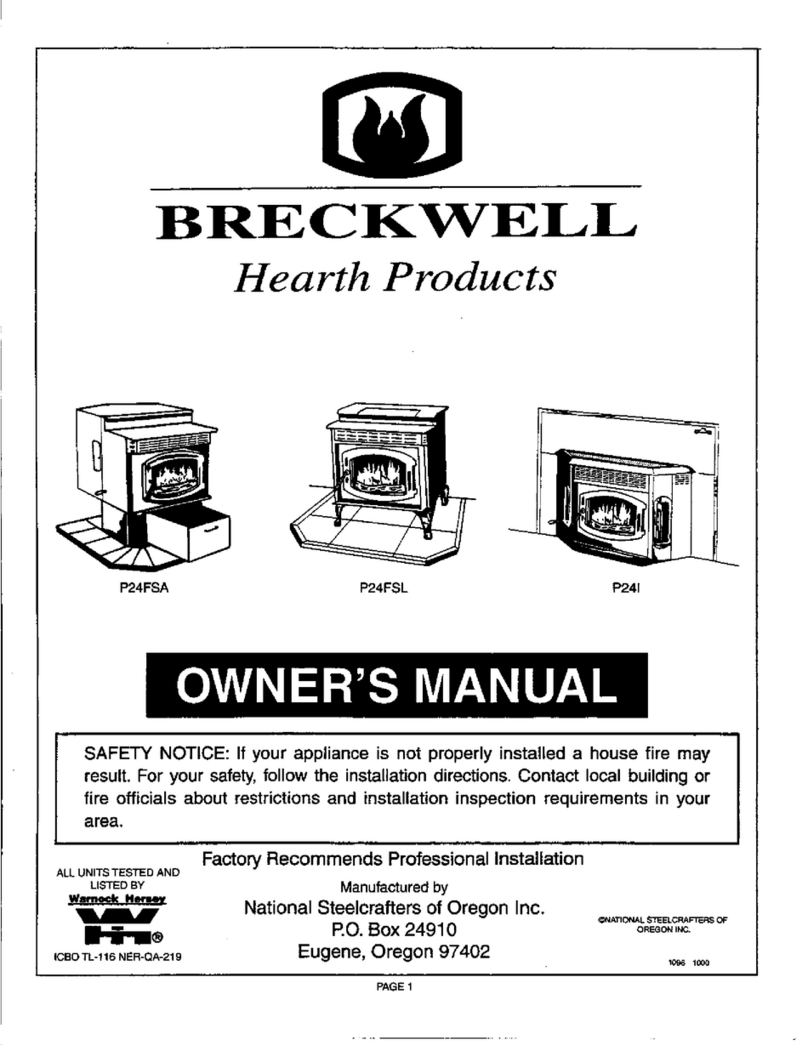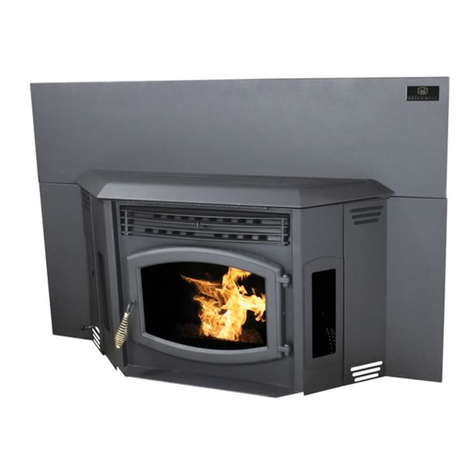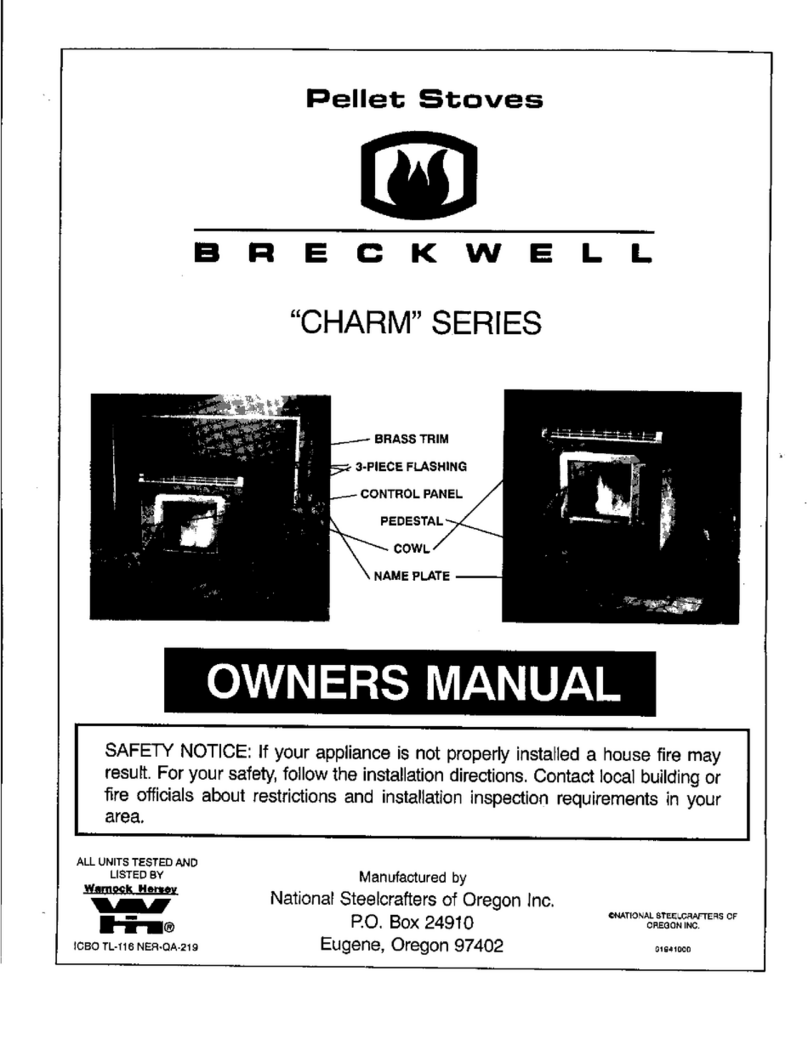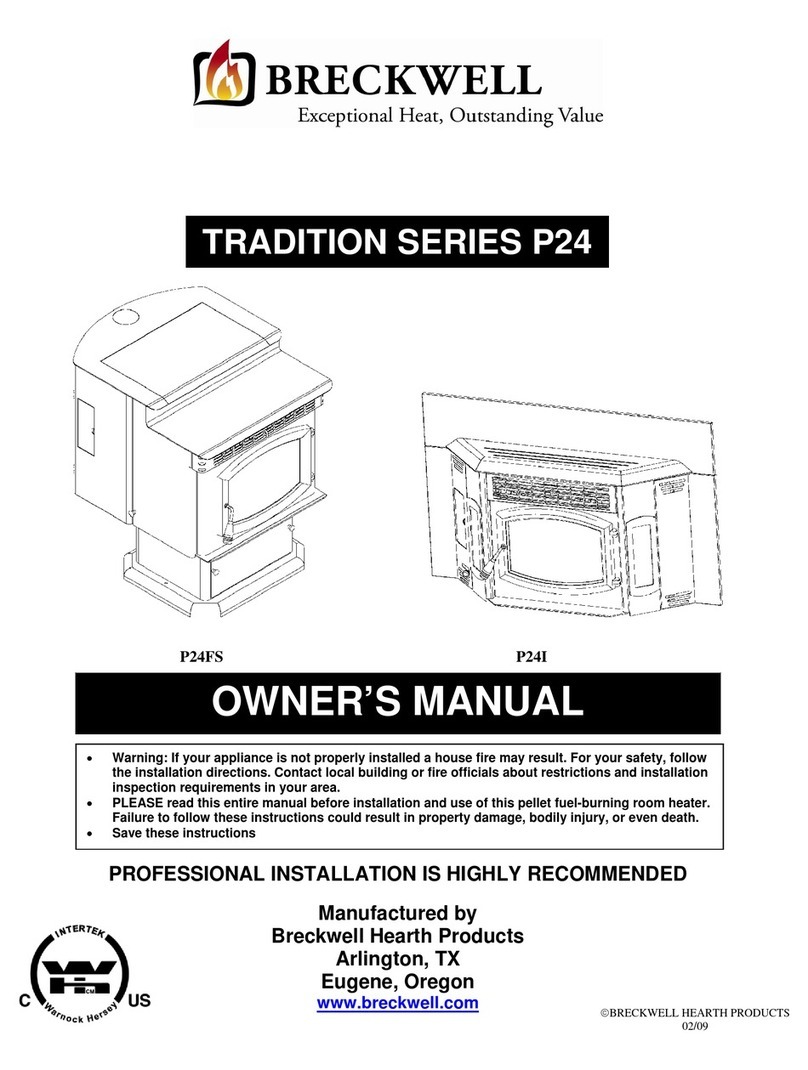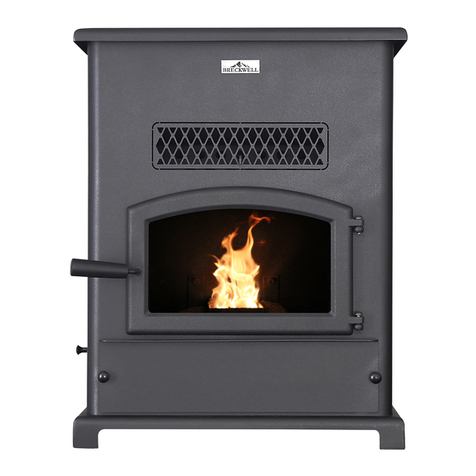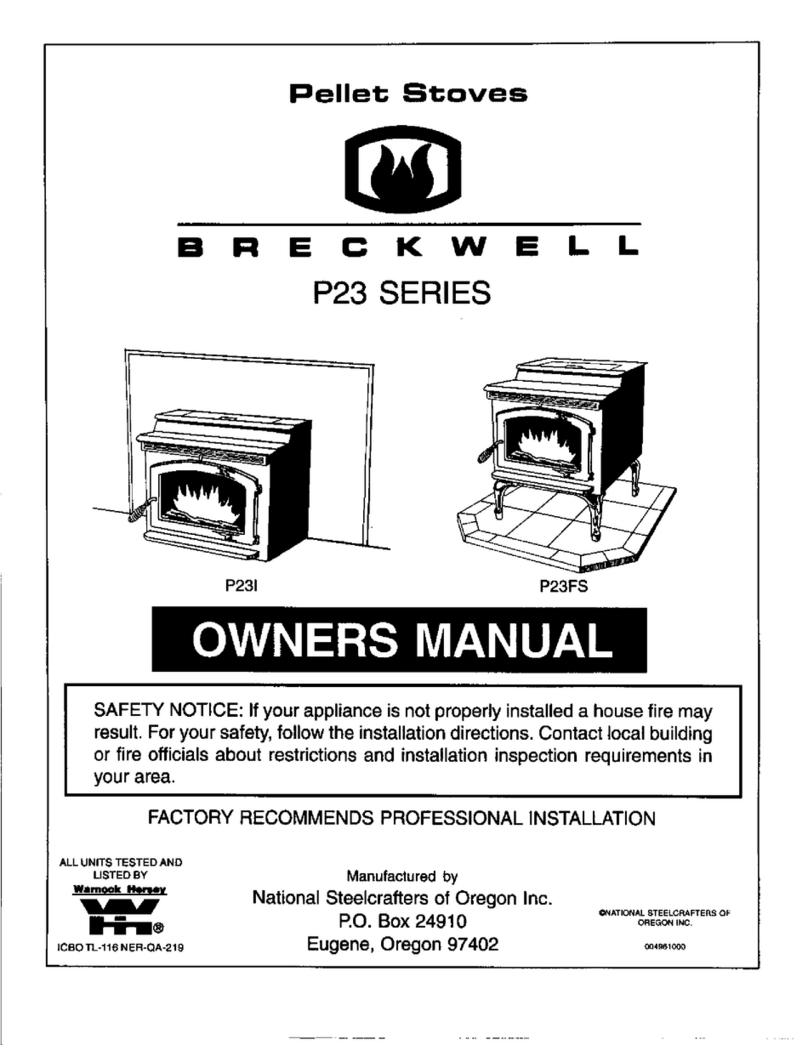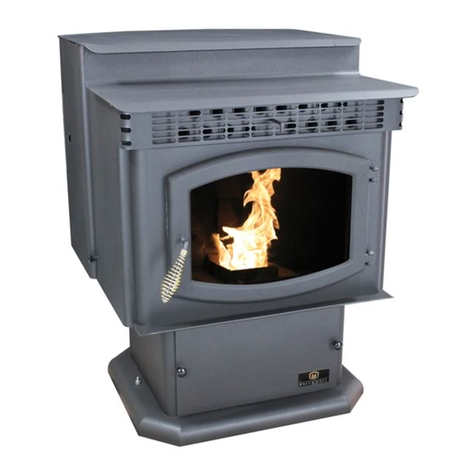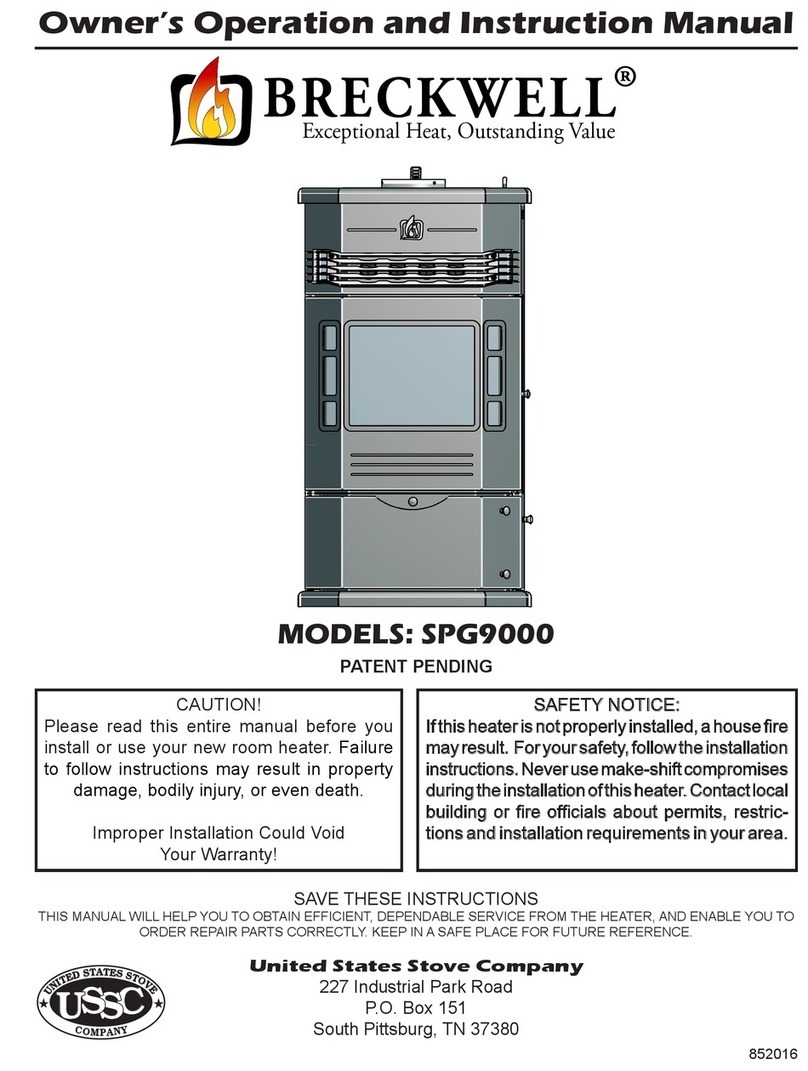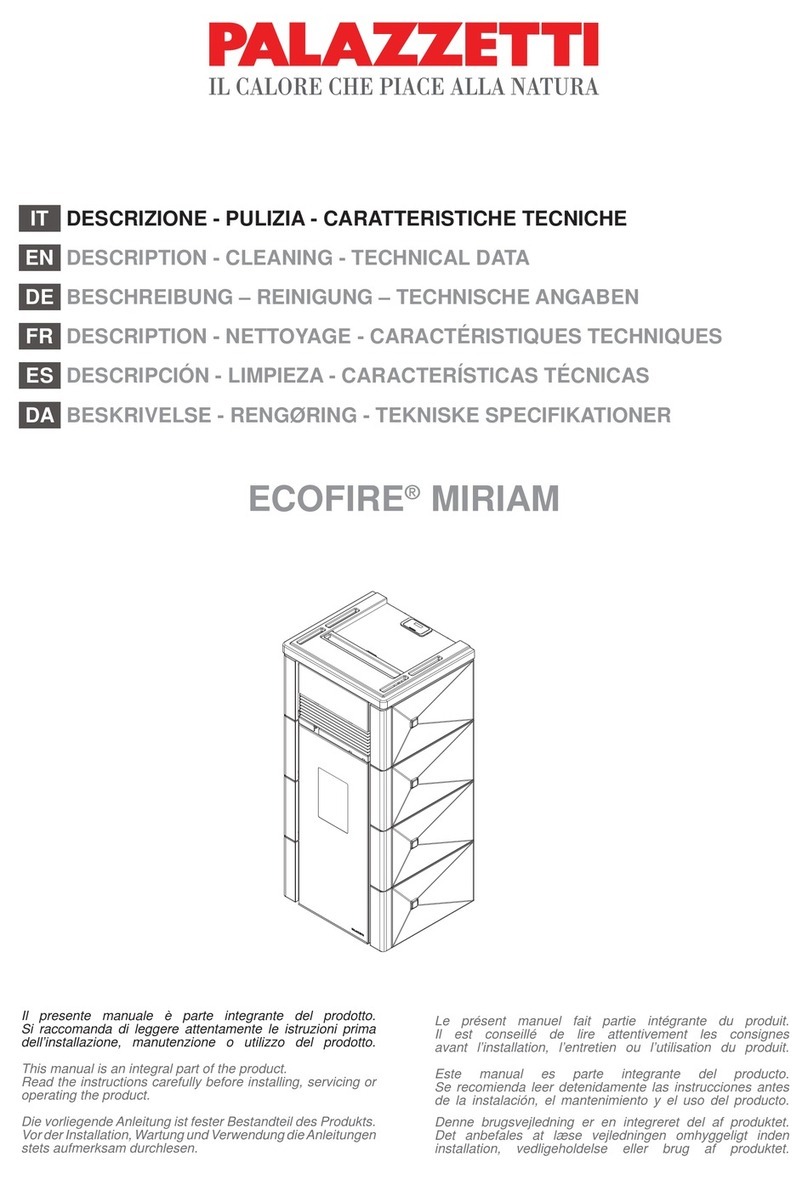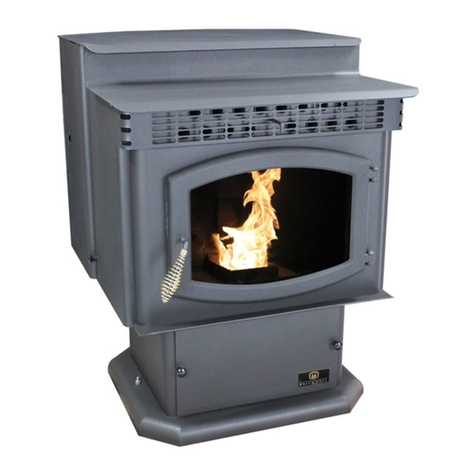
9
The first few fires in your new appliance need to be small so as to
cure the fresh paint and preserve it’s quality. To do so, first follow the
lighting instructions in the “Ignition” section of this manual. After
ignition, the primary air control needs to be left on the maximum
setting for the first 30 - 40 minutes. After 30 - 40 minutes, close
down the primary air control to a medium or medium low burn
rate to maintain a small fire in the unit, doing so will properly cure
the paint. Only fill the hopper with a minimum amount of fuel,
approximate 10 lbs initially, then increase the quantity up to full
hopper capacity on subsequent burn cycles.
IGNITION
1. Open the hopper lid and check to make sure that the fuel flap
is in the open position. If it is not, use the handle on the right
side of the unit to reset. Fill the hopper with premium pellets
(approximately 45 pounds), and close and latch the hopper lid to
ensure it is sealed.
2. After filling the hopper with pellets, make sure that the air
control is set to the maximum setting.
3. Open the lower chamber door, and inspect the secondary burn
basket for new unburned pellets. If there are any unburned
pellets that have fallen through the burn grate into the basket
they must to be removed before igniting the unit. Once the basket
is cleaned out, swing the ignition port cover to the side and place
a ZIP fire starter in the port.
4. Once the fire starter is ignited and burning, close the combustion
chamber door. If the fire starter and pellets are slow to ignite,
it may be necessary to leave the combustion chamber door
cracked for 5-10 minutes until the unit is fully burning. NEVER
leave the combustion chamber door open for longer than the
first 10 minutes, this can cause unsafe burning conditions.
5. After the combustion chamber door is closed, allow the unit to
burn on the maximum heat setting for 30-40 minutes before
adjusting the damper and reducing the burn rate.
OPERATION
• DO NOT open viewing door during operation.
• DO NOT open the lower combustion chamber door during
operation. After the ignition process the door must remain
closed and sealed while the unit is being operated. If the
door is opened during operation it can cause unsafe burning
conditions.
• DO NOT refuel the unit if the fuel level is down to where you can
see the fuel flap.
During operation if the fuel level in the hopper gets down to the fuel
cut off flap, you can not refuel the unit until it is completely cool. As
the unit burns, coals will build up in the secondary burn basket, the
basket will need to be agitated periodically to level out the coals.
A good example of this is if the coals are building up close to the
burn grate the basket needs to be agitated. NOTE: This appliance
does not have a “quick” shutdown method. Once the appliance has
been charged with fuel, ignited and burning, it will burn until all
fuel has been consumed by combustion. Please note that once the
fire does cease, the appliance may still be quite warm or HOT and
could remain Hot for an undetermined amount of time depending
on firing conditions. Experience burning your appliance, will tell you
how many pellets to put in the hopper in order to burn for a desired
period of time. This unit may run anywhere from 1 - 6 hours on a
single 10 lb charge depending on the air adjustment setting and
quality of fuel used. You may use the below primary air settings as
a good starting point when burning your new appliance. Please note
that these settings may vary depending on certain factors that may
affect combustion.
CAUTION: Never use gasoline, gasoline-type lantern fuel,
kerosene, charcoal lighter fluid, or similar liquids to start or
“freshen up” a fire in this heater. Keep all such liquids well
away from the heater while it is in use. Hot while in operation.
Keep children, clothing and furniture away. Contact may cause
skin burns.
CAUTION:
• Do not ever attempt to light the stove from the bottom of the
primary burn grate. Always use the ignition port to start the
unit.
• Do not ever attempt to light the stove with the upper
chamber access door open.
• Do not ever attempt to light the stove with coals remaining
in the fire pot drop tube or on the primary burn grate.
• Do not ever attempt to light the stove without first resetting
the temperature sensitive fuel flap. Ensure the fuel flap is in
the open position.
• Allow the unit to cool to the touch before refueling and
lighting, if the unit runs out of fuel, or if the fuel level is
below the fuel cut off flap.
Ignition Port Closed
Ignition Port Open
Primary Air Settings (Slide Damper is located on the right side of
stove) (Damper Adjustment: Sliding the damper up increases air)
Low Damper lever pushed all the way down
Medium - Low Damper lever moved 1/3 of the way up
Medium - High Damper lever moved 2/3 of the way up
High Damper lever lifted up to the maximum position.
CAUTION: Never alter the damper slide or the adjustment range
to increase firing for any reason. Doing so could result in heater
damage and will void your warranty.
WARNINGS
• NEVER OVERFIRE YOUR STOVE. IF ANY PART OF THE STOVE
STARTS TO GLOW RED, OVER FIRING IS HAPPENING.
READJUST THE AIR INTAKE CONTROL AT A LOWER SETTING.
• ATTEMPTS TO ACHIEVE HEAT OUTPUT RATES THAT
EXCEED HEATER DESIGN SPECIFICATIONS CAN RESULT IN
PERMANENT DAMAGE TO THE HEATER.
